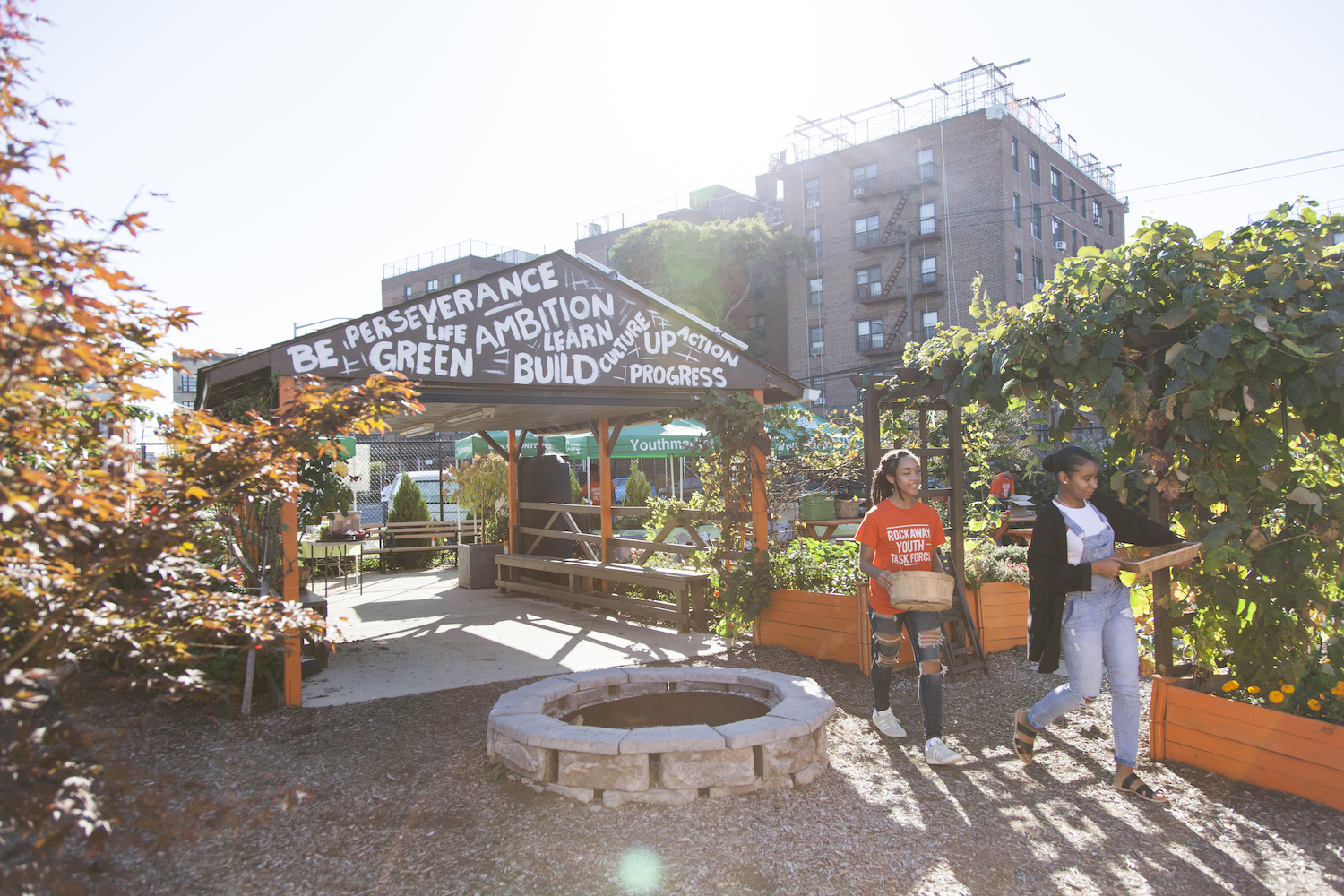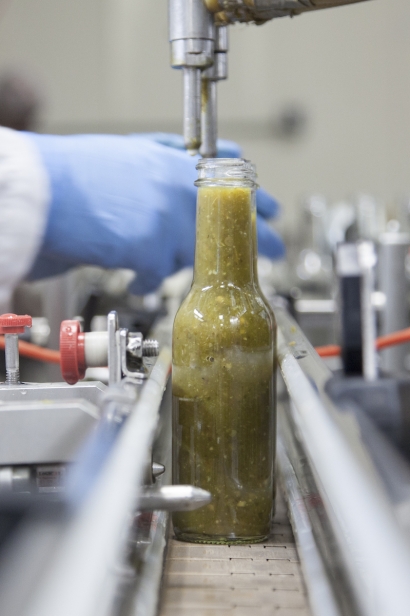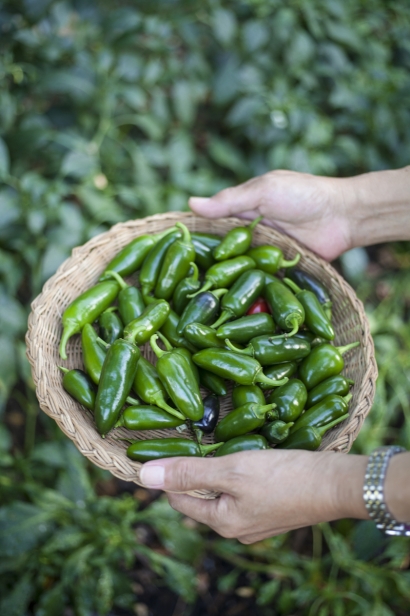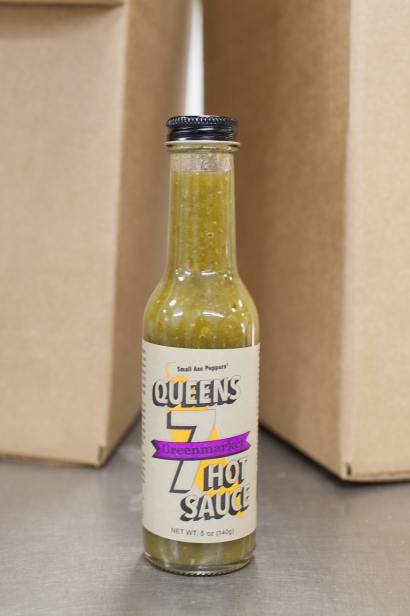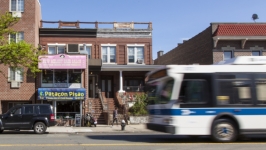Hot Sauce Fit for Queens: Queens 7 Hot Sauce is Rooted in Local
Along the capsaicin-soaked arteries of “the World’s borough,” one can find gnarled chipotles wedged into unassuming tamales, aromatic Thai curries studded with bird’s-eye chilies, tingly bowls of mapo tofu and crunchy empanadas doused in green sauce. It’s not surprising that Queens now has its own hot sauce: Queens 7 Hot Sauce, made from peppers grown in public gardens across the borough.
Funnily enough, this Queens classic was born in the Bronx. In 2014, John Crotty and Daniel Fitzgerald co-founded Small Axe Peppers, a little business with a big social vision. Their model was simple, yet clever. With the help of GrowNYC, Small Axe donates hot pepper seedlings to community gardens across Queens. Come harvest time, Small Axe purchases the ripe peppers from participating gardens at premium prices.
“We wanted to create a model that would pay the community back,” says co-founder Daniel Fitzgerald. “This is also why we chose to make hot sauce—it scales up. You can make 1,000 bottles of hot sauce with just 150 pounds of peppers.”
After three years of successfully producing The Bronx Hot Sauce, Small Axe Peppers expanded to Queens. With the continued help of GrowNYC, over 600 jalapeño seedlings were donated to eight gardens across the borough. Participating growers ranged from Flushing’s John Bowne High School to the Rockaway Youth Task Force, an organization that engages and empowers young people.
In a crowded city, community agriculture often takes root in unexpected places. Atop a rusting railroad track in an industrial corner of Long Island City, volunteers till soil, sow seeds and reclaim a space that, prior to its cultivation, was totally uncared-for.
“We started out as guerilla gardeners,” says Mia Vlah, a co-founder of Smiling Hogshead Ranch. “At first, we had no permission to be here.”
The land, owned by the Metropolitan Transit Authority, was the site of a decommissioned line of the Long Island Railroad. Within a year of the Ranch’s ad-hoc cultivation, the MTA took notice, eventually entering into a contract with the gardeners and granting them legal permission to use the plot.
“We have no lease, but we do pay a yearly fee to the MTA,” says Vlah. “Our land use license strictly limits us to gardening, which can be constraining, because we want to hold events and do more to engage people, but aren’t allowed to. Our situation is not perfect, but we pay very little to be here, and that helps us stay afloat. … By collaborating with GrowNYC and Small Axe Peppers, we were able to connect with other gardening groups that we’d never heard of. In addition to providing us with much-needed income, this project has brought the borough-wide community closer together.”
The growing season begins in early May, when the seedlings are donated. The major harvest occurs in the late summer, but sometimes plants fruit well into autumn. One thousand pounds of peppers went into last year’s Queens production. After the partner gardens harvest the peppers, the Small Axe Peppers team collects and transports them to their commercial kitchen, where they are preserved in vinegar until they’re ready to be cooked and bottled.
To transform peppers into product, Crotty and Fitzgerald enlist the help of King Phojanakong, a Filipina-Thai chef who’s a graduate of the Culinary Institute of America and the chef-owner of Kuma Inn, an award-winning Southeast Asian bistro on Manhattan’s Lower East Side.
Chef King concocted a sweet and acidic recipe for Queens 7 that salutes the variety of flavors and ingredients found across the borough. The name refers both to the number of ingredients in the sauce, and the 7 train; the jalapeño peppers are a nod to the Latino community, while fish sauce lends the distinctive funk and umami of Southeast Asian cuisine. Onions and tomatoes provide a savory base for a sauce that is more than simply liquid heat.
“Thanks to our amazing distributor, we are now sold at over 50 locations in the New York metro area, including Whole Foods,” says Fitzgerald. “We are hoping to expand this model beyond New York.”
Where to Find Queens 7 Hot Sauce
Lockwood Astoria | @lockwoodshop
Lockwood Jackson Heights | @lockwoodshop
Queens Botanical Garden | @queensbotanicalgarden
Fairway Douglaston | @fairwaymarket
Queens 7 Hot Sauce | @queens7hotsauce
Small Axe Peppers | @smallaxepeppers
GrowNYC | @grownyc
Rockaway Youth Task Force | @rockawayyouthtaskforce
Smiling Hogshead Ranch | @smilinghogsheadranch
King Phojanakong | @kumainn_uminom
Kuma Inn


